First Jupiter and Moon Europa Photographs From Webb Telescope
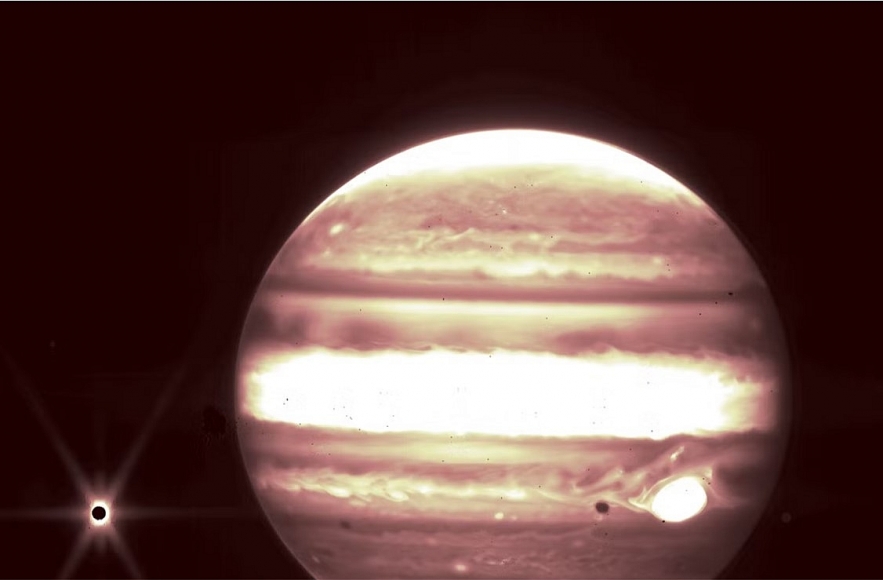 |
| Nasa releases first Webb Telescope photographs of Jupiter and Moon Europa - Jupiter and one of its many moons, Europa are seen through the James Webb Space Telescope’s NIRCam instrument 2.12 micron filter. (Image credit: NASA, ESA, CSA, and B. Holler and J. Stansberry (STScI)) |
The new observatory, which orbits the sun about a million miles from Earth, proved it could peer over 13 billion light-years across the universe this week, when NASA released its first full-color images. Countless galaxies, stars and dust clouds appear in the distant universe.
JWST can photograph objects that are closer and more common as well.
NASA releases new images of Jupiter from James Webb Telescope
The Jupiter photos were captured during Webb's commissioning period, when mission team members were calibrating and vetting the observatory's four science instruments and other systems.
Posted Thursday night in a Nasa weblog, the pictures will not be as extremely processed because the 5 photographs of distant galaxies and nebulae Nasa shared with the general public on Tuesday. Instead, the Jovian photographs come from knowledge collected throughout Webb’s commissioning part throughout the spring, when operators pointed the telescope at totally different objects to ensure the whole lot was working correctly.
 |
| Left: Jupiter and its moons Europa, Thebe and Metis are seen through the James Webb Space Telescope's NIRCam instrument 2.12 micron filter. Right: Jupiter and Europa, Thebe and Metis are seen through NIRCam’s 3.23 micron filter. (Image credit: NASA, ESA, CSA, and B. Holler and J. Stansberry (STScI)) |
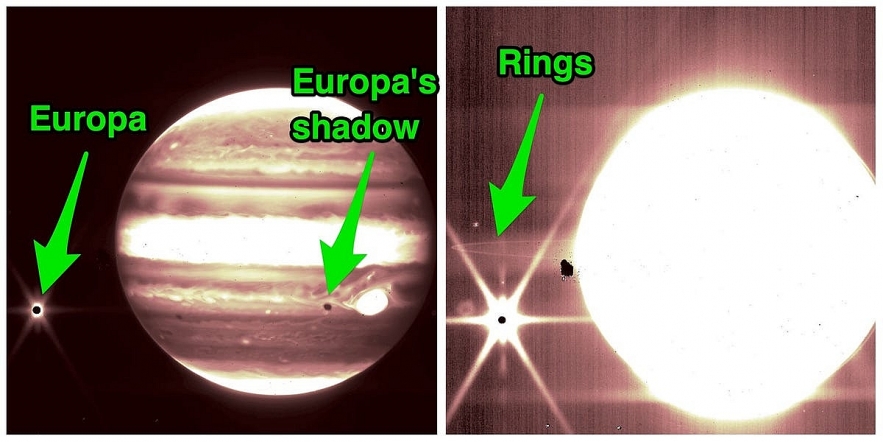 |
| NASA Web Space Telescope Images of Jupiter, its rings and moons: Even the thinnest rings of Jupiter can be seen in some of the new photos. The rings are made of dust particles that are ejected into space when micrometeorites collide with nearby moons. No one knew they existed until the Voyager spacecraft passed Jupiter in 1979 and, looking back, saw the rings silhouetted against the sun. |
Those photos are quite detailed, capturing the giant planet's cloud bands, its famous Great Red Spot and even some of its faint rings. Several moons are visible in the images as well, including Europa, a frigid world that harbors a huge ocean beneath its icy shell.
 |
| Jupiter and some of its moons are seen through the James Webb Space Telescope's NIRCam 3.23 micron filter. (Image credit: NASA, ESA, CSA, and B. Holler and J. Stansberry (STScI)) |
According to the report, the telescope photographed nine targets, and Jupiter was the largest and slowest moving, but also apparently the most stunning. The test demonstrated that JWST was able to track objects, even around a planet as bright as Jupiter bouncing.
The telescope can also photograph fast-moving objects, with one of the images showing an asteroid called 6481 Tenzing, located in the asteroid belt between Mars and Jupiter during commissioning. GIFs shared on Twitter by NASA show the asteroid moving against a background of stars.
On Tuesday (July 12), the James Webb Space Telescope team unveiled the mission's first science-quality images, a handful of amazingly detailed shots of the deep and distant universe.
JUPITER'S MOON EUROPA IS GETTING SALTY
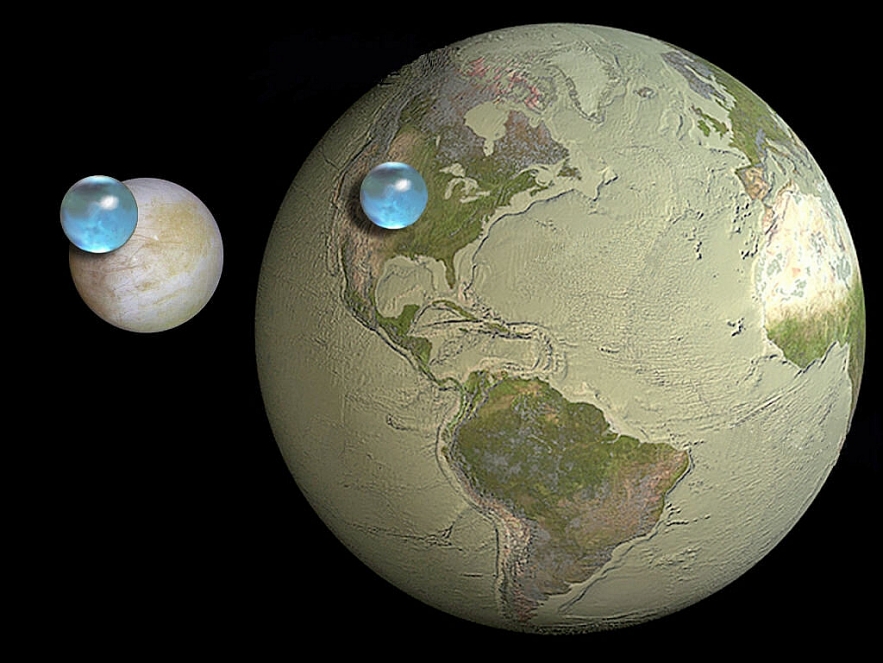 |
| If you gather up all the water under Europa’s ice shell, and all the water on Earth’s surface, Europa has more. Credit: Kevin Hand (JPL/Caltech), Jack Cook (Woods Hole Oceanographic Institution), Howard Perlman (USGS) |
Astronomers have pretty much confirmed the presence of sodium chloride — table salt — on the surface of Jupiter’s moon Europa!
This is cool for many reasons, but the main one is that the most likely source of this salt is the presence of a huge ocean of liquid water under the surface of the moon. Europa’s density indicates it’s made of a mix of rock, most likely in the form of a rocky core with some iron and nickel at the very center, and water ice, which we see on its surface. But that ice may not go all the way down to its core; tides from Jupiter heat the moon up considerably, enough to melt a lot of that water. This subsurface ocean is hidden by a shell of ice many kilometers thick, but there are various ways it can seep up to the surface.
The new news is that they followed up with more spectra and found another absorption feature, this one at 230 nm, in the ultraviolet. This feature is also seen in their lab-zapped salt, which is supportive of the idea that’s what they’re seeing on Europa. Not only that, but it’s seen in the same spots on the moon’s surface, which is further evidence.
There’s also the notion that tidal squeezing from Jupiter can drive tectonic forces in Europa’s core, creating cracks from which deeper, hotter chemicals could spew. If that sounds familiar, well yeah, look up hydrothermal vents on Earth. These blart out chemicals noxious to humans, but deep-sea creatures love ‘em. And they provide heat and energy, so if these vents exist on Europa, they’re a great place to look for little alien fishies and such.
| Webb, which launched on Dec. 25, 2021, was designed to peer deep into the universe's past, studying the first stars and galaxies ever to form. But the infrared observatory is a highly capable multipurpose tool, and astronomers will use it to investigate a variety of cosmic objects and phenomena — including some in our own solar system, as the Jupiter pictures show. Data from the Webb’s commissioning part, in addition to the info underlying the beautiful first photographs shared with the general public on Tuesday, are actually being revealed within the Space Telescope Science Institute’s Mikulski Archive for Space Telescopes for additional research. But scientists received’t have lengthy to attend earlier than Webb’s first cycle of official science observations will get underway this summer time, a program that can embrace observations of Jupiter, Uranus, asteroids and Mars, in addition to essentially the most distant galaxies within the Cosmos. |
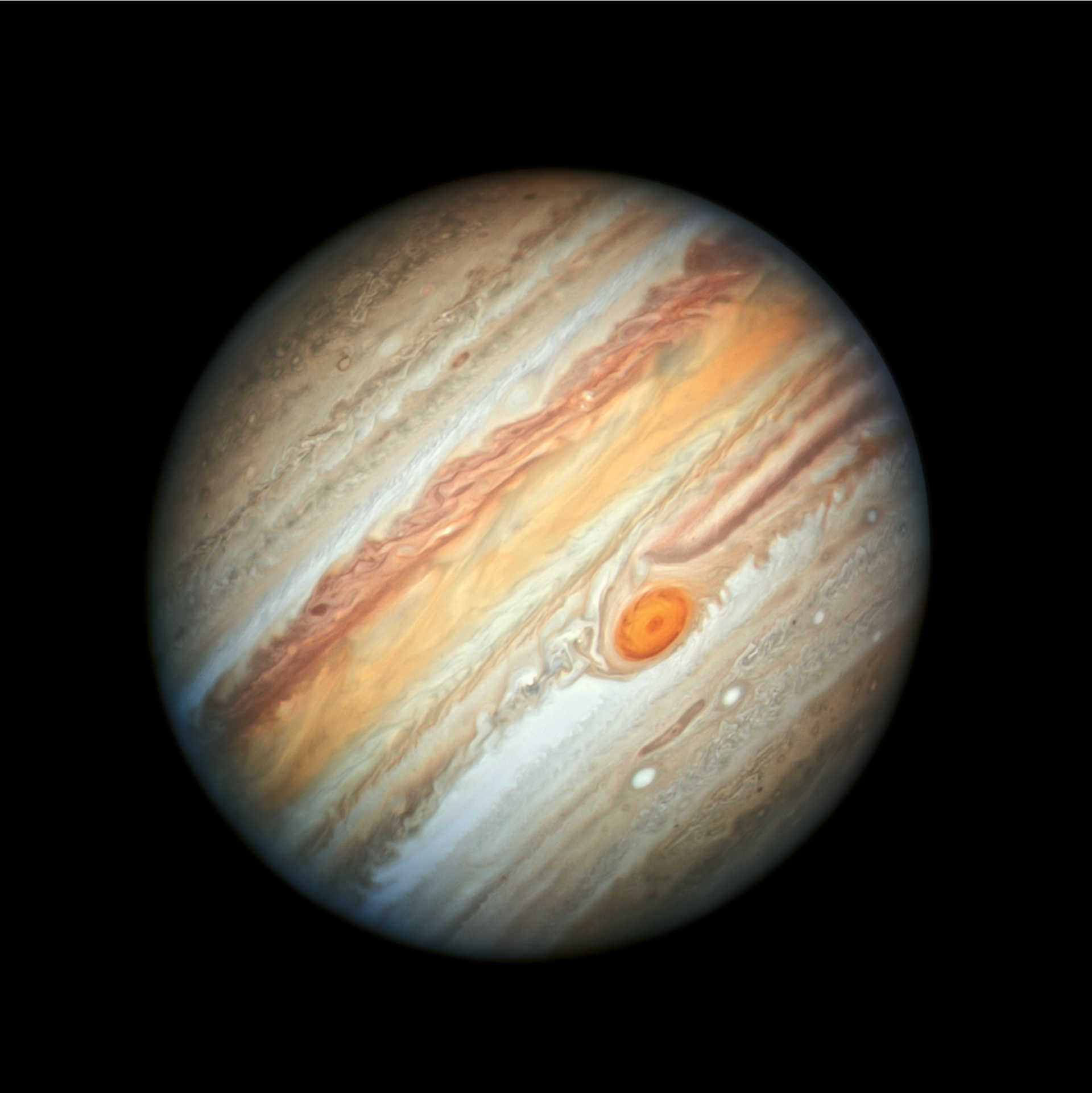 18 Interesting Facts About Jupiter 18 Interesting Facts About Jupiter Jupiter is the largest planet in the solar system. Fittingly, it was named after the king of the gods in Roman mythology. In a similar ... |
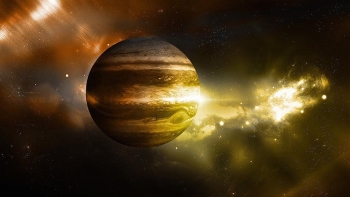 Top 11 Mind-blowing Facts about Jupiter Top 11 Mind-blowing Facts about Jupiter Jupiter is the largest planet in the solar system and is the fifth planet out from the Sun. It is two and a half times ... |
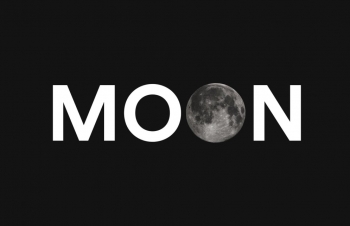 Facts about the MOON: Top 12 Interesting Things Facts about the MOON: Top 12 Interesting Things At a distance of 384,400 km from the Earth, the Moon is our closest celestial neighbour and only natural satellite. Like the Earth itself, the ... |
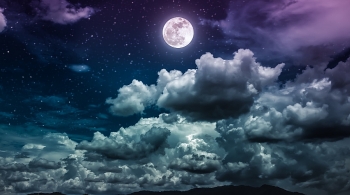 Facts about Cold Moon - Last Full Moon of the Year: Date, Timings, All you need to Know Facts about Cold Moon - Last Full Moon of the Year: Date, Timings, All you need to Know The upcoming lunar event Last Full Moon or also known as the Cold Moon, which is the highest full moon of 2020, last full moon ... |























